Organic Japanese Puerh is a unique offering from Butiki Teas. I’ve never heard of a japanese puerh, so I had to add this tea to my cart with my last Butiki order.
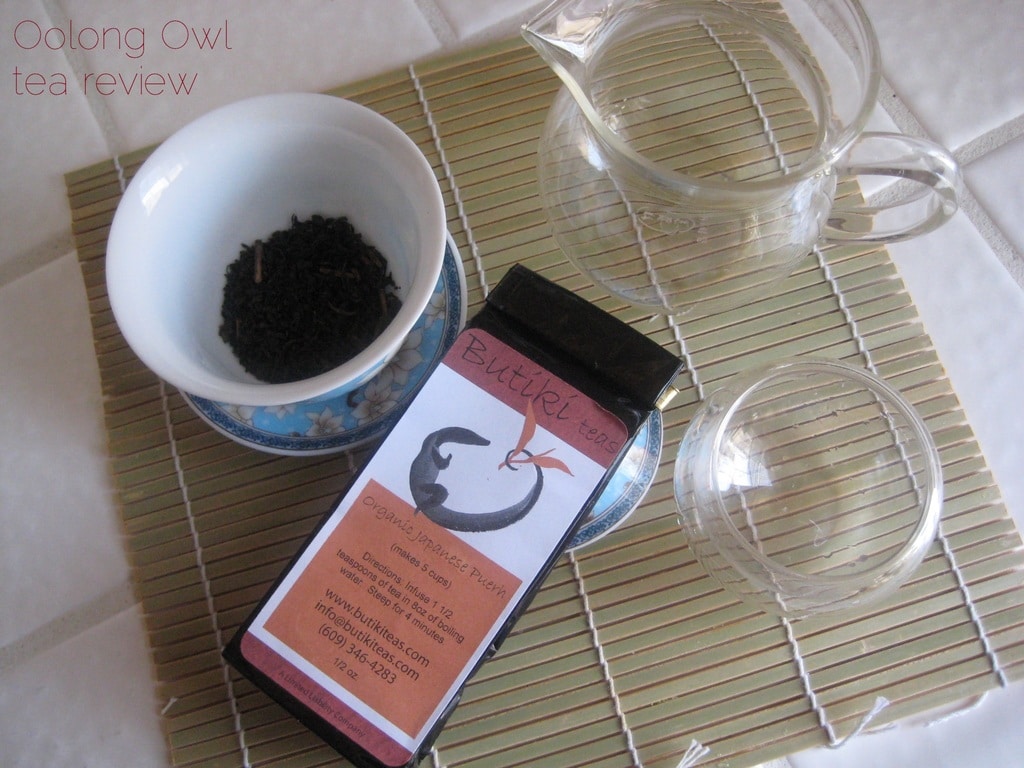
DRY LEAF: The tight, chippy looking black leaf smells a little like cocoa and tobacco.
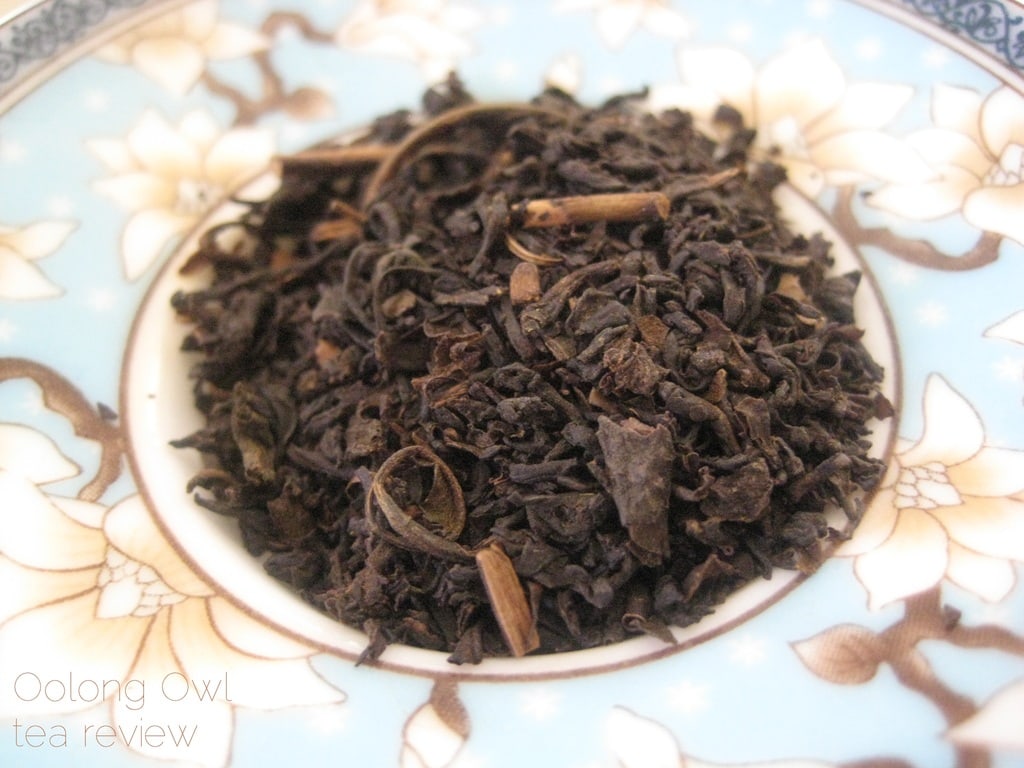
STEEPED (Gaiwan): Lovely reddy peach amber colour!
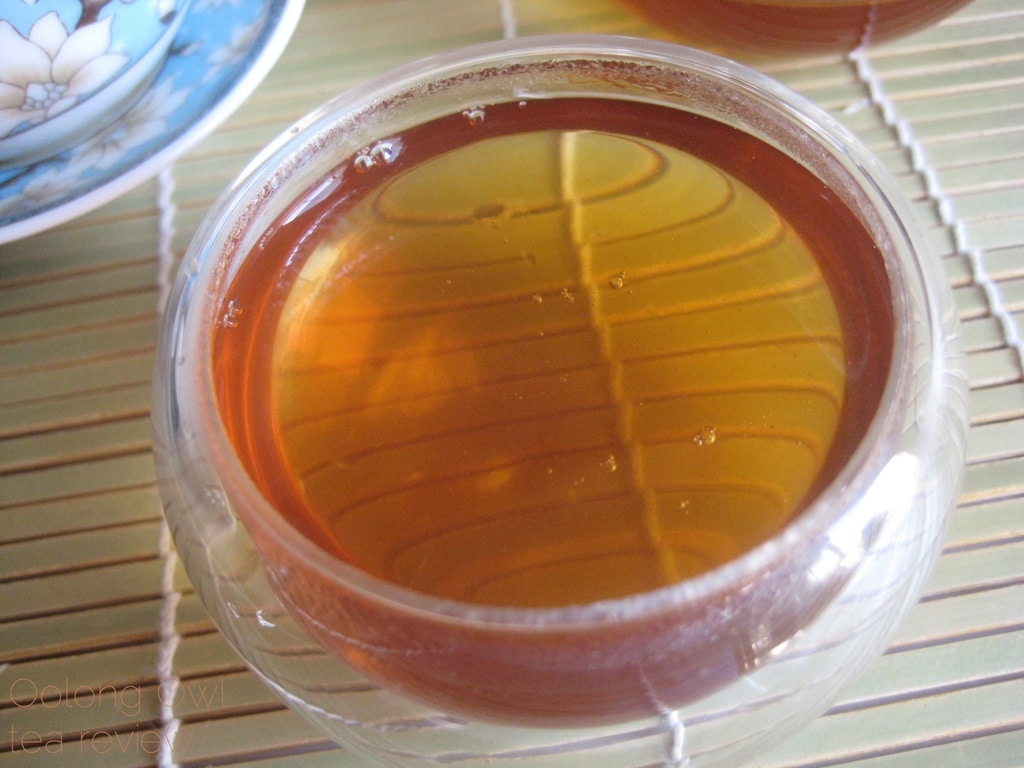
First infusion: I did a 5 second steeping with boiling water using a gaiwan. The flavor has a light, crisp and clean coffee note. There’s some other flavors going on too that remind me of roasted chestnuts and barley teas. End of sip is a light sweetness – kind of like sweet brown rice syrup.
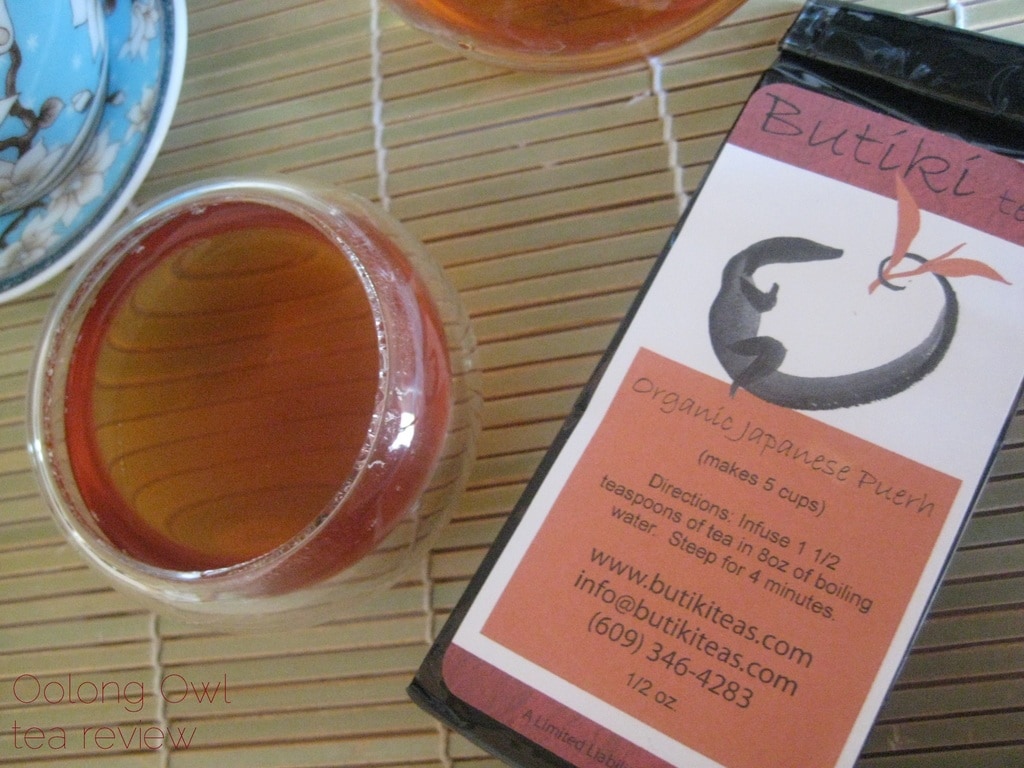
Second infusion: 10 seconds. The roasty, barley, nutty and brown rice notes intensify into a malty flavor. This infusion is slightly dry that leaves a bit of butteryness on my lips! Very neat! 1/10 on the Dry-o-meter.
Third and fourth infusion: 20 /30 seconds. Best steeping! It’s light, but has a really good meld of the chestnut, roasty, barley, rice sweeteness. Sweet throughout the whole sip! The coffee flavor is an aftertaste along with the butteryness. The dryness did not change. I feel some kinda salty snack would really compliment this tea.
Lovely colour here! That pretty peachy puerh colour I love, but more on the pink side!
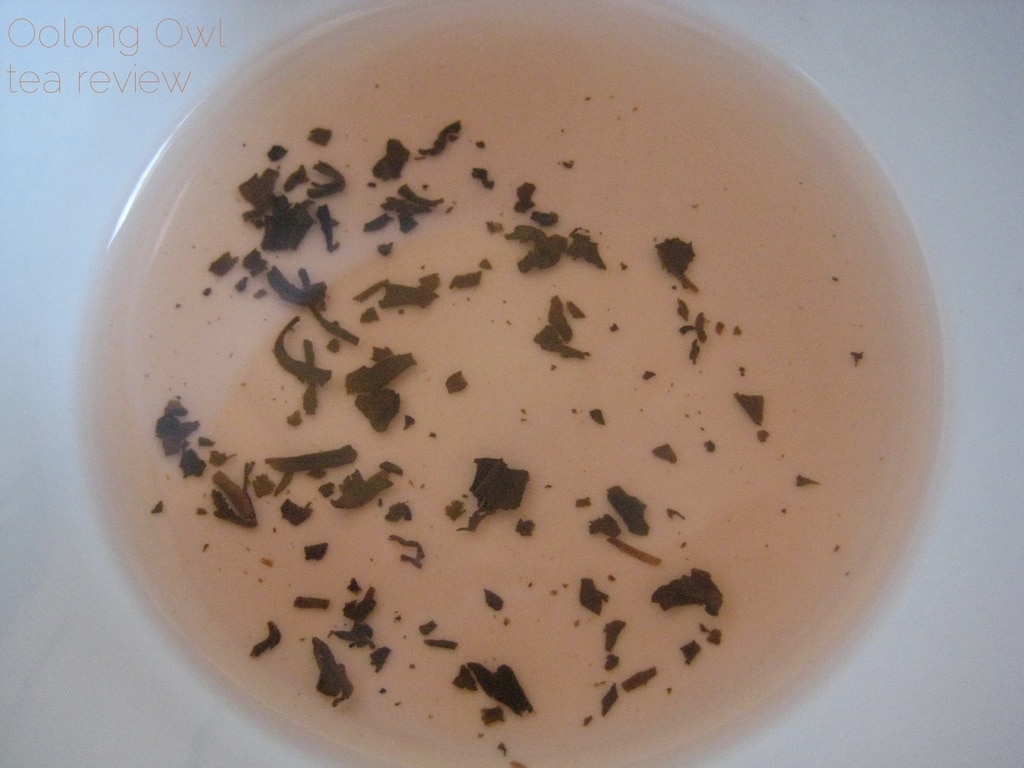
Fifth and sixth infusion: 40 seconds/50 seconds. Even better of a steeping! All the flavored have fully meshed into a juicy, brown rice and chestnutty! The dryness has disappeared!
I busted out the roasted, salted seaweed to snack while having this tea – matches perfectly!
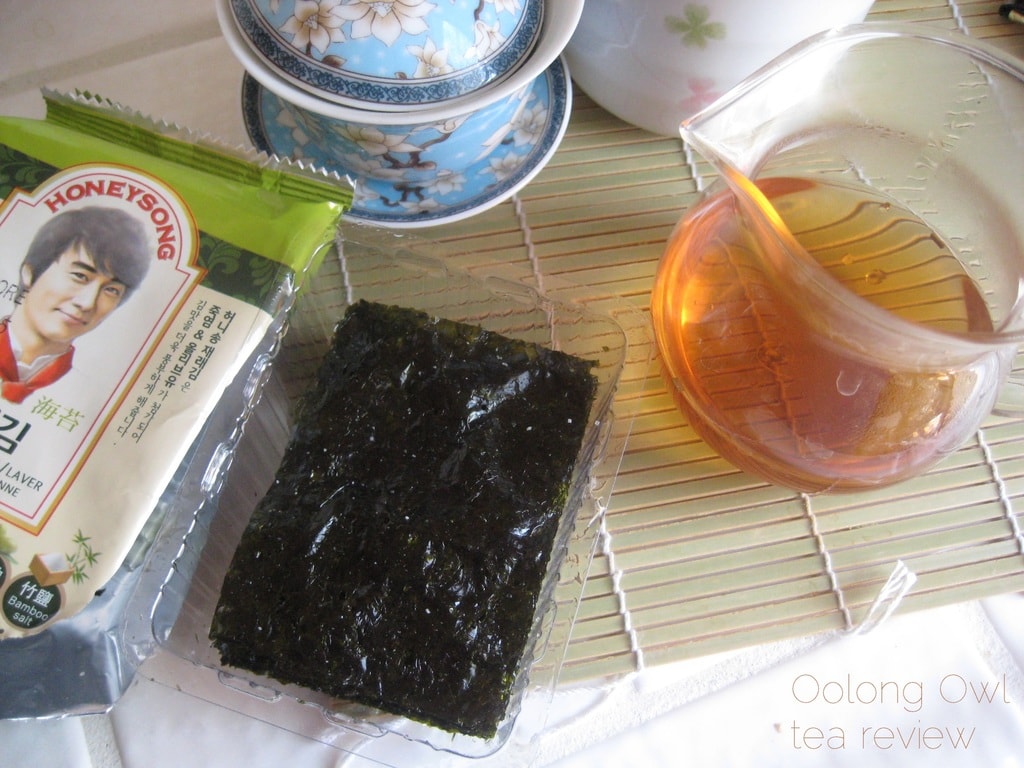
Seventh, eighth, ninth, tenth and eleventh infusion: the colour of the tea is changing to a vibrant orange reminding me of marigold and sunflowers – and when you get to the bottom of the cup, the tea turns that pinky peach. The flavor is getting lighter but also sweeter. As it gets lighter, it gets a soft brown rice and chestnut. The 9th infusion is starting to get a mineral taste going on, which kept going on for the later infusions.
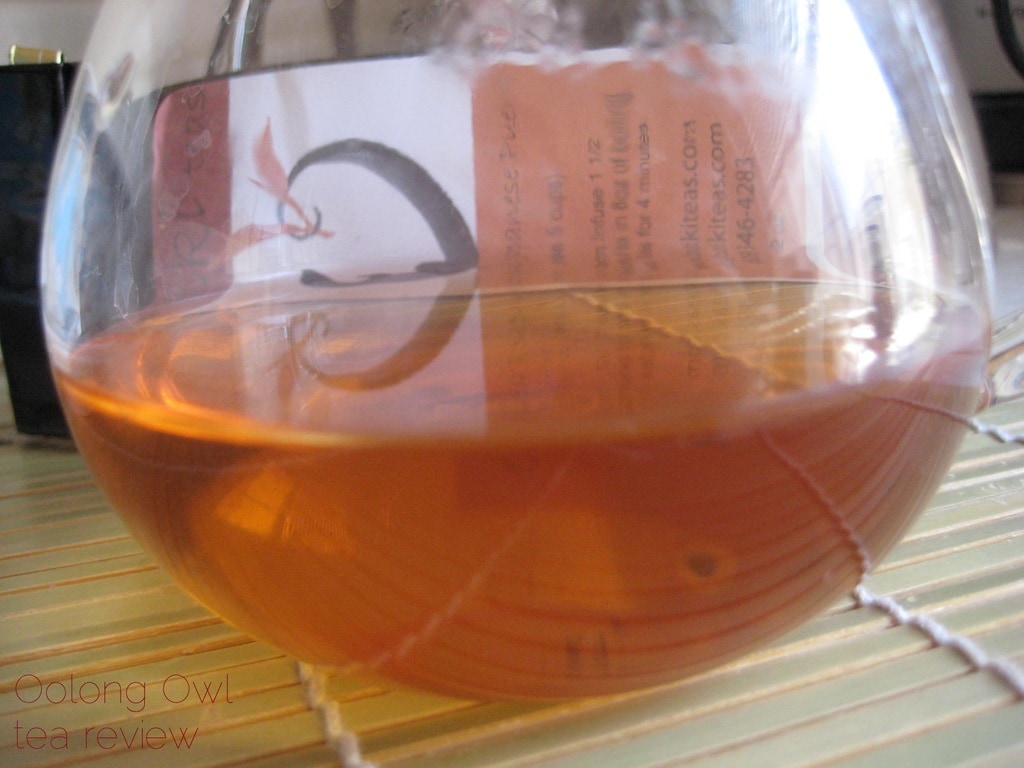
Twelfth and thirteenth infusion: I’m not sure how this tea is still going, but it is. The colour is the same peachy rose. I think the Japanese Puerh has won! It’s still going and I’m done for the day! I started this tea at like 11am, and it’s 5pm now!
~~~~~~~~~~~~~~~~~~~~~~~~~~~~~~~~~~~~~~~~~~~~~~~~~
WESTERN STYLE STEEPING: I was kinda scared to try this – I dislike loose puerh after 1 minute steepings as they are just too strong for me. I followed the package directions for steeping this Japanese Puerh – boiling water for 4 minutes. The colour is a woodsy brown.
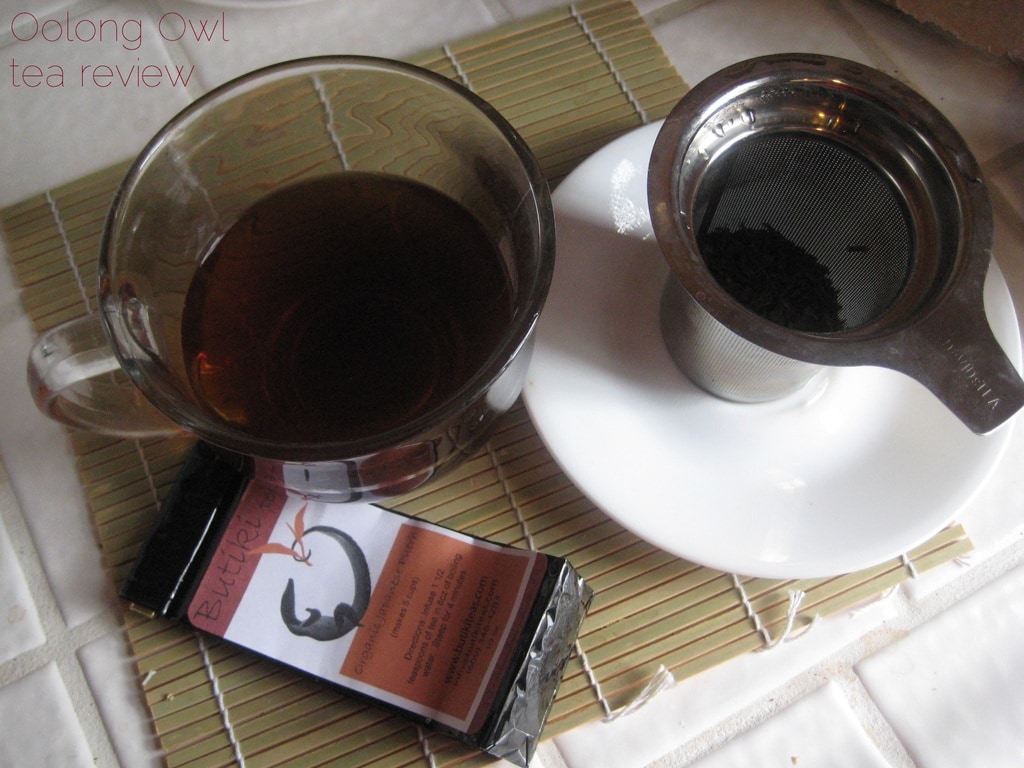
Taste? It’s an interesting balance of light, yet rich and robust of a tea. Steeped this way, its much more coffee like in flavor and much more roasty brown rice, and of course, a bit stronger than the short steepings. Have you ever had rice that was toasted to the bottom of the pan, kinda like this scorched rice recipe from Maanchi? This tea is like this, with a very comfort food feel. The dryness is here again with a little sweetness at the end.
Resteep #1 (boiling, 5 minutes) reminded me of the 3rd and 4th gaiwan steepings. So good! The dryness is gone!
Resteep # 2 (boiling, 6 minutes) reminds me of around the 6th infusion – the colour has gone back to that reddy peach instead of the woodsy brown.
Resteep # 3 (boiling 7 minutes) total trend going on as this steeping is similar to the 12 and 13th of the gaiwan steeped.
Overall, the longer steep is much richer and coffee like than short gongfu steepings.
COMMENTS: Butiki Teas‘ Organic Japanese Puerh is a very different kind of puerh. No fishyness and lighter than other puerhs. This is also not your thick, black puerh – it has a great coffee, chestnut, and roasty rice taste. I’d could see myself purchasing this again, but for now I will likely squirrel the rest of my Organic Japanese Puerh and drink it for a special days.
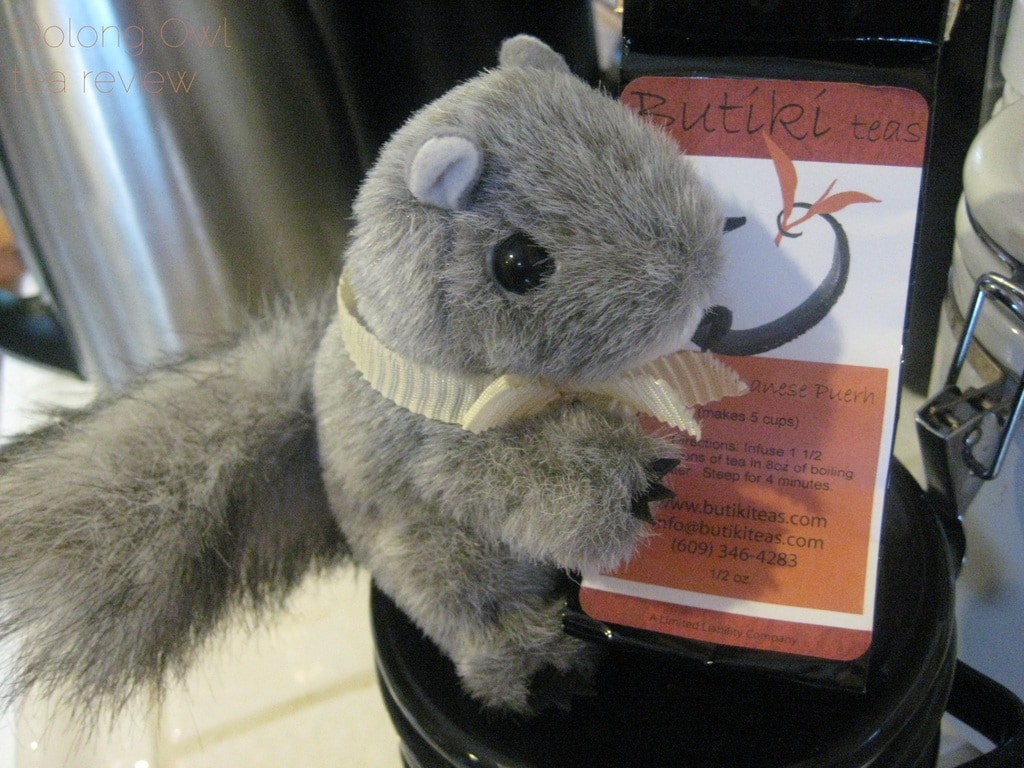
Though, I gotta say this is on the pricey side for Butiki Teas as you only get 5 servings. The resteep ability is huge, so you do get quite a bit of tea in the long run.






